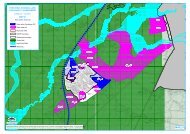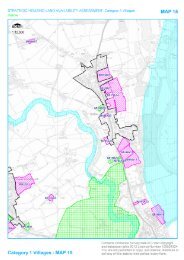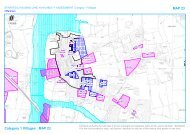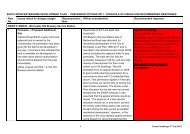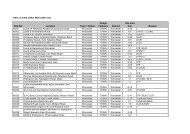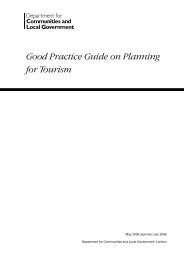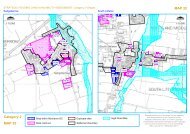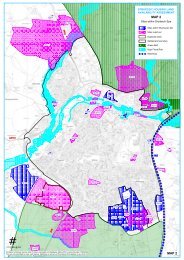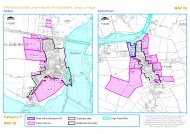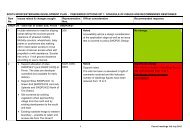Local Transport Plan 3 - Worcestershire County Council
Local Transport Plan 3 - Worcestershire County Council
Local Transport Plan 3 - Worcestershire County Council
You also want an ePaper? Increase the reach of your titles
YUMPU automatically turns print PDFs into web optimized ePapers that Google loves.
The area of South <strong>Worcestershire</strong> is made up of the rural districts of Malvern Hills and Wychavon, andthe City of Worcester. There are two Areas of Outstanding Natural Beauty; the Malvern Hills to the westand the Cotswolds to the south and east. This whole area is focussed on Worcester as the main locationof services and facilities, and a major hub for transport, providing connections to the West Midlands, theSouth West, the rest of the United Kingdom and international destinations, via Birmingham InternationalAirport in particular.Approximately 286,400 live in South <strong>Worcestershire</strong>, distributed as follows: 116,700 in Wychavon, 94,700in Worcester and 75,000 in Malvern Hills. The majority of the population live in the urban areas, includingDroitwich Spa, Evesham, Great Malvern, Pershore, Tenbury Wells, Upton-upon-Severn and WorcesterCity. Approximately 70% of Worcester City residents live and work within the city. In comparison a lowerpercentage of Malvern Hills (59%) and Wychavon (59%) residents work in their home districts, signifyinghigher levels of longer-distance commuting to Bromsgrove District, the Wyre Forest District,Herefordshire, Warwickshire and Birmingham.Both Wychavon and Malvern Hills have an ageing population structure with higher proportions of theirresidents over retirement age than in Worcester (27% and 24.5% compared with 17.5%), while Worcesterhas a greater concentration of working age residents (64%). This trend is forecast to continue over theLTP3 period, which has implications for transport provision.The area benefits from good access to the National Strategic Highway Network, including the M5, M50,and A46. The A38, A44, A4440, A422, A449, A443 and A4103 and A4104, provided by the <strong>County</strong> <strong>Council</strong>,represent the primary local highway network in the area. Some of the busiest roads in the county arelocated in South <strong>Worcestershire</strong> and in particular in and around Worcester City. The busiest section ofthe A-road network is the A44 Worcester Bridge in the City Centre, with around 37,000 vehicles per day.This level of demand has led to peak period congestion, journey time unreliability, environmental issuesand the designation of Air Quality Management Areas in Worcester (Dolday/Bridge Street, Lowesmoor,Newtown Road and St John's), with a number of other parts of the city demonstrating deteriorating airquality.Traffic trends in South <strong>Worcestershire</strong> indicate that there has been a slight fall in use of Highways Agencymanaged roads (Motorways), although the busiest motorway junctions in the county are located in South<strong>Worcestershire</strong> (M5 Junctions 5, 6 and 7). Traffic flows on the A-road network have remained fairly stableacross South <strong>Worcestershire</strong>, although congestion and journey time unreliability remains a problem.




